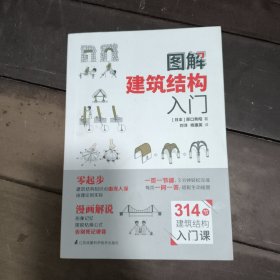
电视访谈中话语缓和的语用研究
¥ 8.88 2.5折 ¥ 35 九品
仅1件
北京大兴
认证卖家担保交易快速发货售后保障
作者李海辉
出版社世界图书出版公司
出版时间2014-03
版次1
装帧平装
货号208
上书时间2024-05-13
- 最新上架
商品详情
- 品相描述:九品
- 内页干净
图书标准信息
- 作者 李海辉
- 出版社 世界图书出版公司
- 出版时间 2014-03
- 版次 1
- ISBN 9787510055423
- 定价 35.00元
- 装帧 平装
- 开本 32开
- 纸张 胶版纸
- 页数 272页
- 字数 240千字
- 【内容简介】
- 本书以崔永元主持的《实话实说》栏目的谈话内容为语料,对电视访谈中的话语缓和进行综观考察,分析其策略、语境制约及语用功能,并结合语言顺应论与语用移情理论探讨其心理运作机制。话语缓和指言语交际中说话人弱化其施为力度以减缓话语负面效果的言说方式,是一种语言现象也是一种语用策略。它涵盖了言语行为的指事、行事与成事,并在这三个维度上通过交际者之间的意义协商达到话语力度与话语负面效果的同步弱化。
- 【目录】
-
序
Chapter lIntroduction
1 .0 A General Introduction
1.1 The Rationale of the Present Study 4
1.2 Problems with Previous Studies
1.3 The Object of the Present Study
1.4 A Description of the Data
1.5 0utline of the Thesis
Chapter 2Literature Review
2.0 Introduction
2.1 Terminological Issue
2.2 Approaches to Mitigation"…,
2.2.1 The Sociolinguistic Approach
2.2.2 The Cross cultural/lnterlanguage Pragmatic Approach
2.2.3 The Pragmatic Approach
2.2.3.1 The Pragmalinguistic Trend
2.2.3.2 The Semanticopragmatic Trend
2.2.3.3 The Sociopragmatic Trend
2.2.3.4 The Psychopragmatic Trend
2.3 Achievements
Chapter 3The Conceptual Framework
3.0 Introduction
3.1 Definitions of Mitigation
3.1.1 Previous Definitions Revisited
3.1.2A Working Definition of Mitigation
3.2 Delimitation of Mitigation
3.2.1Mitigation and Indirectness
3.2.2Mitigation and Politeness/Facework
3.3 Theoretical Background
3.3.1 Linguistic Adaptation
3.3.2Empathy
3.4 Characterization of the Conceptual Framework
3.4.1Mitigating Strategies
3.4.2 Contextual Constraints on Mitigation
3.4.3Mitigating Functions
3.4.4Adaptation, Empathy and Mitigation
Chapter 4Mitigating Strategies
4.1Propositional Mitigation
4.1.2 Evidentials
4.1.3 Tag Questions
4.1.4Epistemic Modals
4.1.5Subjectivizers
4.2 Illocutionary Mitigation
4.2.1Disclaimers
4.2.1.1Intention disclaimers
4.2.1.2 Entitlement disclaimers
4.2.1.3 Knowledge disclaimers 102
4.2.3 Truth Claimers
4.3 Perlocutionary Mitigation
4.3. 1 Simple Anticipation 12
4.3.2 Concern Showing
4.3.3 Penalty Taking
4.3.4 Direct Dissuasion
Chapter 5Contextual Constraints on Mitigation
5.0 Introduction
5.1 Mitigation as Empathic Adaptation to Power
5.1.2 Empathic Adaptation to Power: An Analysis
5.2 Mitigation as Empathic Adaptation to Negative Emotions
5.2.1 Negative Emotions
5.2.2 Empathic Adaptation to Negative Emotions: An Analysis
5.3 Mitigation as Empathic Adaptation to Controversies
5.3.1 Controversies
5.3.2 Empathic Adaptation to Controversies: An Analysis
5.4 Mitigation as Empathic Adaptation to Taboo Topics
5.4.2 Empathic Adaptation to Taboo Topics: An Analysis
5.5 Mitigation as Empathic Adaptation to Social Values
5.5. 1 Social Values
5.5.2 Empathic Adaptation to Social Values: An Analysis"""'. 154Chapter 6Mitigating Functions
6. 1 Interpersonal Functions 1
6.1.1 Image Management
6. 1 .2 Pacifications 1
6.1.3 Solidarity Building
6.2 Communicative Functions
6.2. 1 Elaboration Invitation 1
6.2. 1 .2 Comment Invitation 1
6.2. 1 .3 Commitment Invitation 1
6.2. 1 .4 Negation Invitation 1
6.2.2 Floor Manipulations
6.2.2. Floor Keeping
6.2.2.3 Floor Termination 1
6.2.3 Persuasions
6.2.3.1 Compliance Enhancement
6.2.3.2 Credibility Enhancement
Chapter 7 Conclusion
7.0 Introduction 2 1
7.1 Major Findings
7.1.1 Mitigating Strategies
7.1.2 Contextual Constraints on Mitigation
7.1.3 Mitigating Functions
7.1.4 General Findings
7. 1 .5 Empathic Adaptation and Mitigation2 1 97.2Implications
7.3 Limitations of the Present Study
7.4 Suggestions for Future Research
Bibliography
Acknowledgements
点击展开
点击收起
相关推荐
— 没有更多了 —






























以下为对购买帮助不大的评价